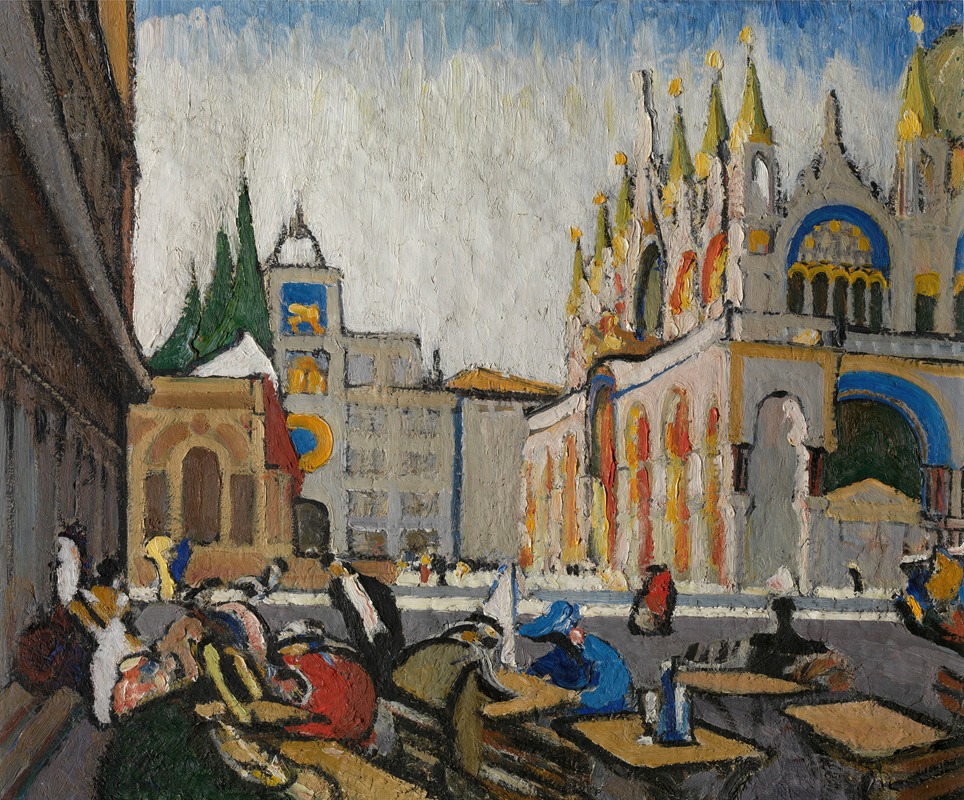
San Marco from the Piazetta
A hand-painted replica of Jules Schmalzigaug’s masterpiece San Marco from the Piazetta, meticulously crafted by professional artists to capture the true essence of the original. Each piece is created with museum-quality canvas and rare mineral pigments, carefully painted by experienced artists with delicate brushstrokes and rich, layered colors to perfectly recreate the texture of the original artwork. Unlike machine-printed reproductions, this hand-painted version brings the painting to life, infused with the artist’s emotions and skill in every stroke. Whether for personal collection or home decoration, it instantly elevates the artistic atmosphere of any space.
San Marco from the Piazetta is a painting by the Belgian artist Jules Schmalzigaug, who was known for his involvement in the Futurist movement. Born in 1882 in Antwerp, Schmalzigaug was one of the few non-Italian artists to be associated with Futurism, a movement that originated in Italy in the early 20th century. The movement emphasized themes of modernity, speed, technology, and dynamic movement, often expressed through vibrant colors and abstract forms.
Jules Schmalzigaug's engagement with Futurism began after he moved to Paris and later to Italy, where he was influenced by the works of prominent Futurists such as Umberto Boccioni and Giacomo Balla. Schmalzigaug's work often reflected the Futurist fascination with the dynamism of urban life and the interplay of light and color.
San Marco from the Piazetta captures the iconic view of the Basilica di San Marco, one of Venice's most famous landmarks, as seen from the Piazzetta, the small square adjacent to the larger Piazza San Marco. This location is a focal point in Venice, known for its historical and architectural significance. The painting is notable for its use of vivid colors and dynamic brushstrokes, which convey a sense of movement and energy, characteristic of the Futurist style.
In this work, Schmalzigaug employs a technique that breaks down the scene into a series of fragmented forms and vibrant hues, capturing the essence of the bustling Venetian atmosphere. The painting reflects the artist's interest in the effects of light and color, as well as his ability to convey the vibrancy of a specific moment in time. The use of color in San Marco from the Piazetta is particularly striking, with bold contrasts and a palette that evokes the shimmering quality of light on the Venetian canals.
Schmalzigaug's interpretation of Venice through the lens of Futurism offers a unique perspective on the city, blending its historical grandeur with the modernist themes of the early 20th century. The painting is a testament to Schmalzigaug's skill in merging the traditional subject matter with avant-garde techniques, creating a work that is both innovative and rooted in the rich cultural heritage of Venice.
Despite his contributions to the Futurist movement, Schmalzigaug's career was tragically short. He died in 1917 at the age of 35, leaving behind a relatively small body of work. However, his paintings, including San Marco from the Piazetta, continue to be appreciated for their dynamic compositions and vibrant use of color.
Today, Schmalzigaug's works are held in various collections, and he is recognized as an important figure in the history of Belgian art and the broader Futurist movement. San Marco from the Piazetta remains a significant example of his artistic vision, capturing the spirit of a city that has inspired countless artists throughout history.

















